1、 Verticality of the side of the flat ruler to the working surface: Place the granite flat ruler on a flat plate, pass the dial gauge seat with a division value of 0.001mm through a standard round rod, and zero it on a standard right angle ruler. Then, in the same way, place the dial gauge holder tightly against one side of the ruler, and the reading of the dial gauge is the perpendicularity error of that side. Similarly, detect the perpendicularity error of the other side and take the maximum error value
2、 Parallel ruler contact point area ratio: Apply display agent on the working surface of the inspected ruler, grind it on a cast iron flat plate or ruler with a precision not lower than its precision, and display obvious contact points on the working surface of the inspected ruler. Then use a transparent thin plate (such as an organic glass plate) with 200 small squares of 2.5mm x 2.5mm engraved within a range of 50mm x 25mm, and place it at any position on the working surface of the inspected ruler. Observe the proportion of the area containing contact points in each square in sequence (in units of 1/10). Calculate the sum of the above ratios and divide by 2 to obtain the ratio of the contact point area of the detected area.
3、 The parallel level ruler is supported by equal height blocks at the standard support marks 2L/9 from both ends of the ruler, and an appropriate inspection bridge plate is selected based on the length of the working surface of the ruler (usually 8-10 steps, with a span between 50 and 500mm); Then place the bridge deck at one end of the ruler and fix the reflector or level on the bridge deck; The bridge deck is gradually moved from one end of the flat ruler to the other end according to the span, and the reading at that position is taken from an autocollimator with a scale value of 1 "(or 0.005mm/m) or an electronic level with a scale value of 0.001mm/m (a composite level with a scale value of 0.01mm/m can be used for level 1 flat rulers with a working face length greater than 500mm, and a frame level with a scale value of 0.02mm/m can be used for level 2 flat rulers) for each span moved; The difference between its maximum and minimum values is the straightness error of the straightedge working surface. The straightness error of any 200mm on the working surface can be determined by selecting 50mm or 100mm bridge slabs and inspecting them within any 200mm using the above method.
4、 The parallelism between the upper and lower working surfaces of a parallel ruler, as well as between the working surface and the lower support surface, is allowed. When a suitable flat plate is not available, the side of the ruler can be placed on a certain support surface, and the height difference of the ruler can be measured using a lever micrometer with a division value of 0.002mm or a gauge with a division value of 0.002mm.










